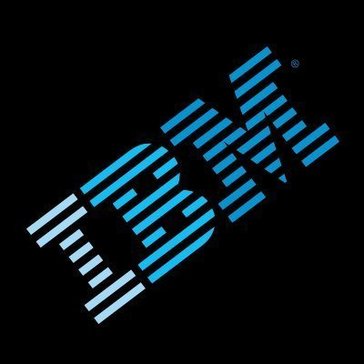Description

IBM Workload Automation

sterlo
Comprehensive Overview: IBM Workload Automation vs sterlo
IBM Workload Automation (IWA) is a comprehensive solution designed to manage, control, and optimize the scheduling and execution of business workflows across multiple platforms and environments. Here's a detailed overview covering its primary functions, target markets, market share, user base, and differentiating factors:
a) Primary Functions and Target Markets
Primary Functions:
-
Job Scheduling and Automation: At its core, IBM Workload Automation allows businesses to automate and schedule jobs and workflows. It supports complex processes and dependencies across multiple systems.
-
Cross-Platform Integration: It provides integration across various platforms and technologies, including cloud, hybrid environments, and on-premises systems. It supports different operating systems such as Windows, Linux, and Unix.
-
Dynamic Workload Adjustment: Offers features for dynamic workload adjustment to adapt to changes in workload demand and system performance in real-time.
-
Scalability and High Availability: Designed to be scalable, it can handle a vast number of jobs and complex scheduling, ensuring high availability and failover support.
-
Analytics and Reporting: Includes comprehensive analytics and reporting tools to provide insights into job performance, system usage, and to support capacity planning.
-
Self-Service Capabilities: Facilitates self-service options for end-users to manage workloads and adjust schedules without needing deep technical expertise.
Target Markets:
- Large Enterprises: Organizations with complex IT environments and diverse workloads that require robust automation solutions.
- Financial Services: Firms that need to ensure reliable and secure processing of transactions and batch processing jobs.
- Retail: Companies with extensive and coordinated supply chain and sales systems requiring automated workloads.
- Manufacturing and Healthcare: Industries that rely on optimized operations for continuous production and service provision.
b) Market Share and User Base
As of the latest data, IBM Workload Automation is a well-regarded solution within the workload automation market, competing alongside other key players such as BMC Control-M, CA Automic, and Broadcom's Automic Workload Automation. While the exact market share can vary by region and time, IBM's legacy and reputation in enterprise IT give it a significant presence, particularly among large enterprises with existing IBM infrastructures.
The user base primarily includes large organizations across various sectors such as finance, healthcare, retail, and manufacturing. Its comprehensive feature set and ability to integrate with diverse IT systems make it a preferred choice for businesses with complex workload automation needs.
c) Key Differentiating Factors
-
Extensive Integration Capabilities: IBM Workload Automation is known for its ability to integrate seamlessly with a wide array of applications, databases, and services, both on-premises and in the cloud.
-
Hybrid and Multi-Cloud Support: Unlike some competitors, IBM emphasizes strong hybrid and multi-cloud capabilities, allowing businesses to manage workflows across different cloud providers.
-
AI and Predictive Capabilities: With IBM's investment in AI, this platform often incorporates predictive capabilities to anticipate and correct workload issues before they affect business operations.
-
User-Friendly Interface: IBM Workload Automation provides a graphical user interface (GUI) that simplifies the management of complex workloads, offering an intuitive experience that caters to both technical and non-technical staff.
-
Comprehensive Analytics: Advanced analytics tools in the platform offer deeper insights into operation efficiencies and optimization opportunities.
-
Security and Compliance: Known for its robust security features, it aligns with various industry regulations, making it suitable for sectors with stringent compliance requirements.
In summary, IBM Workload Automation is a feature-rich solution for enterprise workload management, with strong integration capabilities, adaptability to hybrid and cloud environments, and a focus on using advanced technologies like AI to enhance automation processes. These attributes distinguish it in the competitive landscape of workload automation tools.
Contact Info

Year founded :
Not Available
Not Available
Not Available
Not Available
Not Available

Year founded :
2022
Not Available
Not Available
India
http://www.linkedin.com/company/sterlo
Feature Similarity Breakdown: IBM Workload Automation, sterlo
As of my last update, IBM Workload Automation and Sterlo are not direct competitors or directly comparable products, as they focus on different aspects of workload and IT management. However, I can provide general insights into IBM Workload Automation and a scenario where "Sterlo" could be considered a tool (assuming Sterlo might be a lesser-known or specialized tool) to facilitate automation and workload management.
a) Core Features in Common
Both IBM Workload Automation and a generic workload automation tool like Sterlo would likely have some core features in common, including:
- Job Scheduling and Automation: Automate and schedule complex workflows across various environments and applications.
- Resource Management: Efficient allocation and management of IT resources to optimize tasks and workflows.
- Scalability: Support for expanding operations to handle increasing workloads.
- Integration: Capability to integrate with different systems, platforms, and applications.
- Real-Time Monitoring: Tools for monitoring task progression and performance metrics in real-time.
- Error Handling and Recovery: Automated alerts, logging, and rollback mechanisms in case of failures.
- Reporting and Analytics: Ability to generate comprehensive reports on task performance and system utilization.
b) User Interface Comparison
The user interface (UI) for both products can differ dramatically based on the target audience and the design principles:
-
IBM Workload Automation:
- Comprehensive Dashboard: Provides detailed views into workflows and task performance. Typically more complex due to the product's depth and breadth of functionality.
- Customizable Views: Users can often customize dashboards and reports to prioritize the most relevant information.
- User-Friendly Tools: Despite its complexity, IBM aims at a more user-friendly experience with drag-and-drop capabilities, although initial familiarity might require training.
-
Sterlo (Assumed UI Approach):
- Simplicity and Focus: Less complex if targeted towards smaller businesses or niche operations.
- Streamlined Design: Likely emphasizes ease of use and quick setup, possibly with templates and guided configuration wizards.
- Responsive Layouts: Can adapt well to different device sizes, favoring usability in mobile contexts.
c) Unique Features
While without specific details on "Sterlo," here are some possible unique aspects of each based on typical offerings:
-
IBM Workload Automation:
- Broad Ecosystem Support: Extensive integration with a wide range of enterprise applications, Cloud platforms, and mainframe systems.
- Advanced Analytics: Utilizes AI/ML for predictive workload automation, offering insightful analytics.
- Enterprise-Grade Security: Comprehensive security features for large-scale operation.
-
Sterlo:
- Specific Focus: May target niche markets, offering features tailored to specific industries or unique needs that larger platforms might not address directly.
- Ease of Integration: Possibly simplified integration capabilities for small to medium businesses.
- Cost-Effectiveness: Often more accessible pricing for startups or smaller enterprises, potentially limiting some high-end features.
Understanding the unique differentiators usually requires actual product demos or detailed documentation reviews to grasp the subtleties and innovations of each tool. Always consult with vendor representatives or qualified partners for the most accurate and personalized insights.
Features

Not Available

Not Available
Best Fit Use Cases: IBM Workload Automation, sterlo
IBM Workload Automation and Sterlo are tools designed to optimize and streamline various business processes, but they cater to different needs and use cases.
IBM Workload Automation
a) Best Fit for Businesses or Projects:
IBM Workload Automation (IWA) is a robust solution designed for enterprises requiring complex and dependable automation across various environments, including cloud, on-premise, and hybrid infrastructures. It is particularly beneficial for:
- Large Enterprises: Companies with extensive IT infrastructures that require integrated workflows across different systems and applications.
- Industries with Heavy Compliance Needs: Such as finance, healthcare, and retail, where tasks must run at specific times due to compliance requirements.
- Organizations with Multi-cloud Environments: Those that have assets spread over various cloud services and need centralized control and monitoring.
- Projects Requiring High Availability: Mission-critical operations where downtime needs to be minimized, and backup/recovery tasks need schedule automation.
b) Scenarios for Use:
IWA shines in scenarios such as:
- Complex Scheduling Needs: When needing to handle dependencies and sequence tasks across diverse environments.
- DevOps Integration: Facilitating CI/CD pipelines from concept through testing to deployment.
- Data Processing Workflows: Automating and scheduling ETL processes to ensure data is processed timely.
- Resource Optimization: To automate workload balancing to optimize resources usage efficiently.
Sterlo
b) Preferred Scenarios for Use:
Sterlo is more focused on customer interaction and dynamic content delivery, making it suitable for:
- Omnichannel Communication Needs: When businesses require personalized and consistent customer interactions across multiple channels.
- Rapid Deployment of Customer-Facing Applications: Providing tools that enable faster rollout and management of customer-interaction apps.
- Enhancing User Experience: For projects focused on customer engagement and delivering seamless, impactful digital interactions.
d) Catering to Industry Verticals or Company Sizes:
-
IBM Workload Automation: Given its strengths in handling complex IT environments, IWA is more suited to medium to large enterprises across various industries such as banking, healthcare, telecommunications, and retail. It is ideal for businesses that require robust, scalable IT infrastructure solutions capable of handling vast amounts of data and applications.
-
Sterlo: This solution is adaptable for companies of all sizes, especially those in consumer-facing industries such as retail, insurance, and telecommunications. Its ability to manage multichannel communications and deliver dynamic content is advantageous for SMEs to large corporations looking to enhance customer engagement and service delivery.
Both tools play significant roles in helping businesses achieve operational efficiency, but they cater to different aspects of business processes, with IWA focusing on back-end IT automation and Sterlo focusing on front-end customer interactions.
Pricing

Pricing Not Available

Pricing Not Available
Metrics History
Metrics History
Comparing teamSize across companies
Conclusion & Final Verdict: IBM Workload Automation vs sterlo
When comparing IBM Workload Automation to Sterlo, several factors must be considered to determine the best overall value, the pros and cons of each product, and recommendations for potential users.
a) Best Overall Value:
IBM Workload Automation likely offers the best overall value for enterprises seeking a robust and comprehensive solution for managing complex workloads across diverse environments. Its capabilities in automating and optimizing end-to-end business processes provide significant advantages in scalability, integration, and functionality.
b) Pros and Cons:
IBM Workload Automation:
Pros:
- Comprehensive Feature Set: It offers extensive capabilities for managing complex workflows, including cross-platform scheduling, batch processing, and real-time monitoring.
- Scalability: Designed to handle large-scale operations, suitable for organizations with extensive and diverse IT environments.
- Integration: Seamless integration with a wide range of applications and platforms, enhancing its versatility and adaptability.
- Reliability and Performance: Known for its robust performance and high reliability, which is crucial for mission-critical operations.
Cons:
- Complexity: Can be complex to implement and configure, requiring specialized knowledge and training.
- Cost: Generally expensive, particularly for smaller organizations or simpler use cases due to licensing and operational costs.
Sterlo:
Pros:
- User-Friendly Interface: Typically easier to use with a more straightforward, intuitive design that requires less training.
- Cost-Effective: May be more affordable for smaller businesses or simpler workflows, with lower upfront and operational costs.
- Quick Implementation: Faster to deploy and set up, which can be advantageous for organizations needing a swift solution.
Cons:
- Limited Features: Compared to IBM Workload Automation, it may lack advanced features needed for very complex or large-scale operations.
- Scalability: May not scale as effectively for large enterprises with diverse and expansive IT ecosystems.
- Integration Capability: Potentially limited integration options compared to IBM's extensive compatibility with other systems and applications.
c) Specific Recommendations:
-
For Large Enterprises with Complex Needs: IBM Workload Automation is advisable for organizations with complex, large-scale IT operations and the resources to handle more intricate implementations. The investment can be justified by the broad range of features, integration capabilities, and scalability that IBM offers.
-
For Small to Mid-Sized Businesses or Less Complex Workloads: Sterlo could be the better choice for smaller businesses or simpler workload requirements, offering a more cost-effective and user-friendly solution. Its ease of use and quicker implementation might outweigh the need for more sophisticated features.
-
Hybrid Considerations: Organizations might consider using a hybrid approach if applicable, leveraging IBM for core complex operations and Sterlo for less critical, simpler tasks, balancing costs, and maximizing value.
Ultimately, the decision between IBM Workload Automation and Sterlo should be based on the organization's specific needs, the complexity of their IT environments, budget constraints, and long-term scalability plans.
Add to compare
Add similar companies



